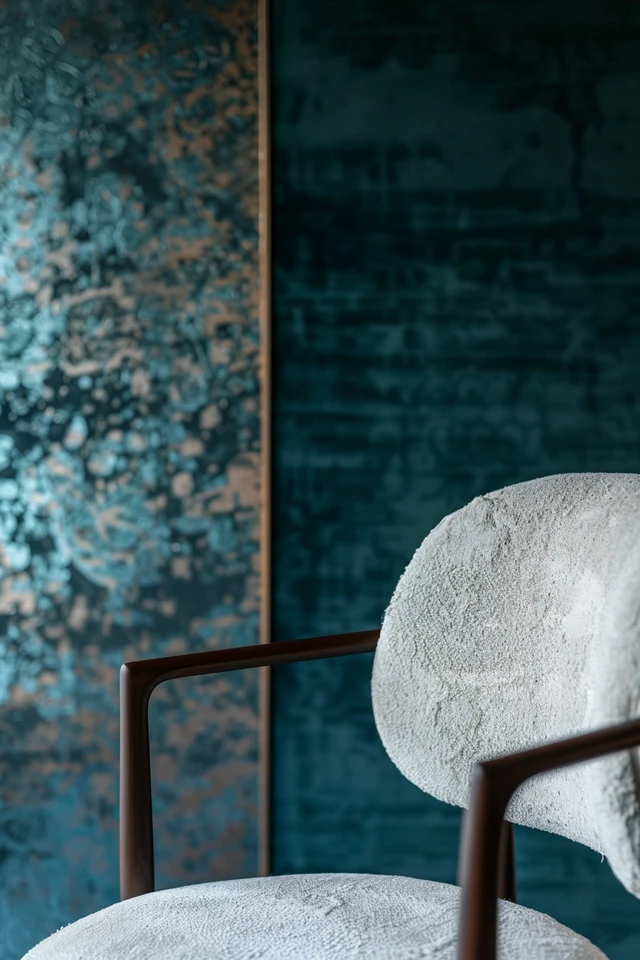If you’ve recently hung wallpaper and notice air bubbles, there are a few common reasons for their occurrence. Applying too much paste or not enough can lead to bubbles, as well as not properly smoothing out the wallpaper paste.
Additionally, using unprimed drywall patching material or an incompatible primer can cause bubbles to form. It’s important to note that bubbles may dissipate over time as the adhesive dries, so it’s best to wait a day or two before attempting to fix them. However, if the bubbles persist, there are steps you can take to remove them and achieve a smooth application.
Key Takeaways:
- Applying too much or too little paste can cause air bubbles in wallpaper.
- Properly smoothing out the wallpaper paste is essential to avoid bubbles.
- Using unprimed drywall patching material or an incompatible primer can lead to bubble formation.
- Allow bubbles to dissipate naturally over time before attempting to fix them.
- Follow the steps outlined in the next section to remove air bubbles and achieve a smooth wallpaper application.

6 Easy Steps To Remove Wallpaper Air Bubbles
To ensure a smooth wallpaper application, it’s crucial to address any bubbles that may arise. Here are six easy steps to fix wallpaper bubbles and achieve a bubble-free, flawless finish:
- Locate the Bubble: Start by identifying the air bubble in the wallpaper. Determine if it’s wet or dry to accurately assess the next steps.
- Make an “X” Incision: Once you’ve located the bubble, carefully make an “X” shaped incision over it using a sharp snap-blade knife. Be sure to follow the pattern of the wallpaper to maintain the overall design.
- Check for Particles: While making the incision, inspect for any particles that may have caused the bubble. Remove these particles if present.
- Press Out Excess Air: Use gentle pressure to press out any excess air trapped within the bubble. Start from the center and work your way outward to expel the air effectively.
- Apply Wallpaper Paste: If necessary, fill a wallpaper pasting syringe with wallpaper paste. Carefully inject the paste into the bubble using the syringe nozzle. This will help reattach the wallpaper to the wall.
- Smooth and Clean: Use a wallpaper smoothing tool to firmly attach and smooth the repaired area, eliminating any remaining bubbles and ensuring a seamless finish. Finally, wipe away any excess adhesive with a damp sponge.
By following these six easy steps, you can effortlessly fix wallpaper bubbles and achieve a bubble-free, smooth wallpaper application. Remember, attention to detail and careful execution are key when it comes to achieving the perfect wallpaper finish.

Tips to Prevent and Avoid Wallpaper Bubbles
When it comes to wallpapering, preventing air bubbles is much easier than fixing them later on. Here are some valuable tips to help you avoid those pesky wallpaper bubbles during installation.
First and foremost, proper surface preparation is key. Take the time to remove any old wallpaper and ensure the walls are smooth and clean. Applying a compatible primer will also create a good base for the wallpaper, reducing the chances of bubbles forming.
Choosing the right wallpaper paste is crucial. Make sure to use a high-quality adhesive that is suitable for your specific wallpaper type. Follow the manufacturer’s instructions for the correct amount of paste to apply. Applying too much or too little can result in unwanted bubbles.
Another crucial factor is the environment in which you hang the wallpaper. Maintaining a suitable temperature and humidity level in the room is important for optimal drying. Extreme temperatures and excessive humidity can cause bubbles to appear. Keep the room well-ventilated to ensure proper drying and prevent moisture buildup.
By following these simple yet effective tips, you can avoid wallpaper bubbles and achieve a flawless finish. Remember, prevention is always better than cure when it comes to wallpaper hanging. So take the time to prepare, choose the right materials, and create the perfect environment for a smooth and bubble-free wallpaper installation.

